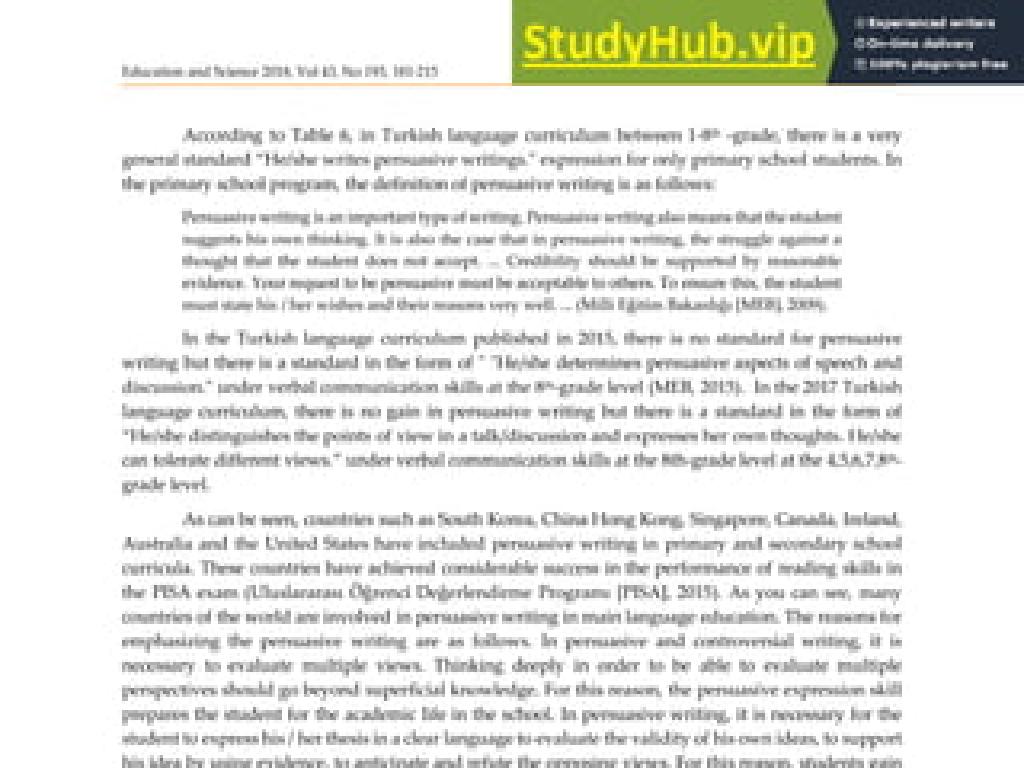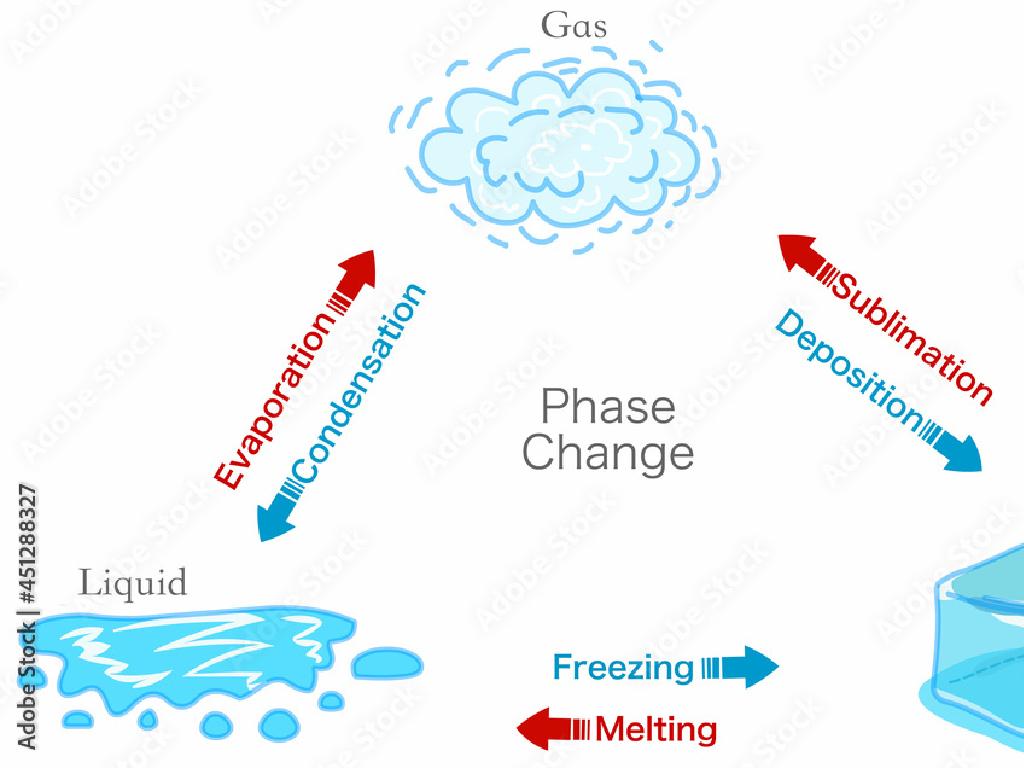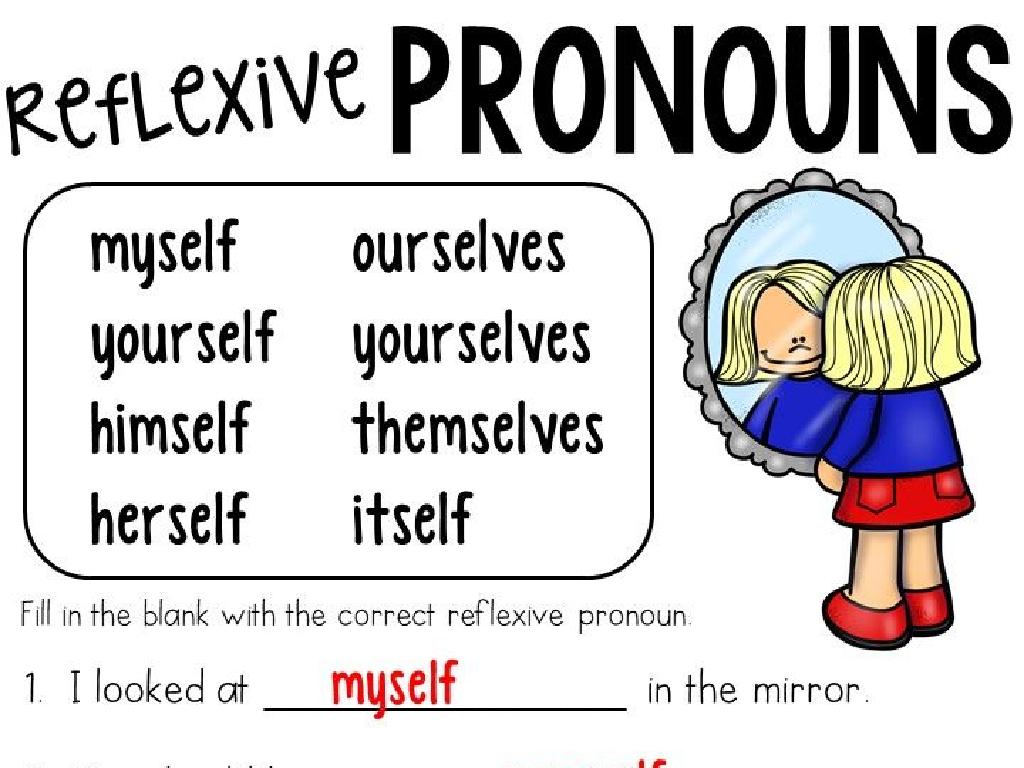Construct Explanations Of Natural Selection
Subject: Science
Grade: Sixth grade
Topic: Adaptations And Natural Selection
Please LOG IN to download the presentation. Access is available to registered users only.
View More Content
Welcome to Natural Selection!
– Exploring Adaptations
– Adaptations are traits that help survival.
– Defining Natural Selection
– It’s nature’s way of selecting the fittest.
– Significance of Natural Selection
– Ensures survival and diversity of species.
|
This slide introduces the concept of natural selection within the broader topic of adaptations and natural selection. Begin by explaining adaptations as traits that have developed over time to help an organism survive and reproduce in its environment. Then, define natural selection as the process by which organisms better adapted to their environment tend to survive and produce more offspring. Emphasize the importance of natural selection in shaping the diversity of life on Earth and its role in the survival of species. Use examples like the peppered moth during the Industrial Revolution or antibiotic resistance in bacteria to illustrate these concepts. Encourage students to think of other examples where they can see natural selection at work in everyday life.
Exploring Adaptations in Nature
– Define adaptations
– Adaptations are traits that help organisms survive and thrive in their environments.
– Examples of adaptations
– Camouflage in animals, or drought resistance in plants.
– Adaptations aid survival
– Traits that improve survival chances are more likely to be passed on.
– Adaptations & natural selection
|
This slide introduces the concept of adaptations, which are characteristics that have evolved over time to help organisms survive in their specific environments. Start by defining adaptations and then provide relatable examples, such as how camouflage helps a chameleon avoid predators, or how certain plants can survive in arid conditions due to their ability to store water. Discuss how these adaptations can increase an organism’s chance of survival and reproduction, leading to these traits being more common in the population over time through the process of natural selection. Encourage students to think of other examples and consider how these adaptations may have come to be.
Natural Selection Explained
– Darwin’s Theory of Evolution
– Charles Darwin developed the theory explaining how species evolve over time.
– Four Principles of Natural Selection
– Variation, Inheritance, Selection, and Time are key to understanding natural selection.
– Examples: Variation and Inheritance
– Variation: Different traits in beetles. Inheritance: Offspring inherit traits.
– The Role of Time in Evolution
– Time allows for these changes to accumulate, leading to evolution.
|
This slide introduces the concept of natural selection, a cornerstone of evolutionary biology, as proposed by Charles Darwin. It’s crucial to explain that natural selection is the process by which species adapt to their environment and evolve over time. The four main principles include variation (differences in traits), inheritance (traits passed from parents to offspring), selection (certain traits become more common because they are advantageous), and time (evolutionary changes require many generations). Use tangible examples, such as the varied colors of beetles and how these variations, if advantageous, can become more common over generations. Emphasize the importance of time, as natural selection is not an overnight process but one that occurs over long periods.
Natural Selection in Action
– Example: Peppered Moths
– Light and dark moths’ population changed due to industrial pollution.
– Predator’s role in selection
– Predators tend to catch prey that stands out more, affecting which traits are passed on.
– Adaptation leads to survival
– Organisms change over time to better suit their environment.
– ‘Survival of the fittest’ concept
– The most suited organisms to an environment are more likely to survive and reproduce.
|
This slide introduces the concept of natural selection using the case study of the peppered moths in England, which changed color due to industrial soot. Highlight how predators influence which traits become more common in a population by preferring certain prey. Explain adaptation as the process by which species become better suited to their environment, leading to ‘survival of the fittest,’ where ‘fittest’ refers to the best adapted to the current environment. Encourage students to think of other examples where animals have adapted to their surroundings for survival.
Explaining Natural Selection
– Evidence supports natural selection
– Fossils & DNA show how species change over time
– Adaptations link to survival
– Traits that improve survival become more common
– Natural selection in student’s words
– Use your understanding to explain natural selection
– Activity: Create your explanation
|
This slide aims to help students construct their own explanations of natural selection by using evidence and understanding the role of adaptations in survival. Start by discussing how evidence like fossils and DNA support the theory of natural selection. Explain how certain traits can help an organism survive and reproduce, leading to those traits becoming more common in a population over time. Encourage students to articulate the concept of natural selection in their own words to demonstrate comprehension. As an activity, have students create their own explanations of natural selection, possibly through a short essay or illustration, to reinforce their understanding.
Activity: Design a Creature for Survival
– Craft a unique creature
– List adaptations for its environment
– Consider camouflage, food sources, climate
– Explain how each adaptation helps
– For example, thick fur for cold climates
– Predict future evolutionary changes
– How might your creature change in 100 years?
|
In this creative activity, students will apply their understanding of natural selection by designing an imaginary creature perfectly adapted to a specific environment. They should consider factors such as predators, food sources, and climate. Students will list the creature’s adaptations and explain how each one would help the creature survive and reproduce. Encourage them to think critically about the role of natural selection in shaping these adaptations. Finally, students will make predictions about how their creature might evolve over time, considering potential changes in the environment and how that would influence the creature’s development. This activity will help solidify the concept of natural selection and adaptation through hands-on learning.
Class Discussion: Natural Selection
– Share your creature design
– Discuss adaptation strategies
– How do specific features help survival?
– Reflect on natural selection’s role
– Natural selection leads to the best-suited organisms thriving.
– Understand survival of the fittest
– ‘Fittest’ refers to the best match for the environment.
|
This slide is meant to facilitate a class discussion on natural selection. Students will present a creature they’ve designed, focusing on its unique adaptations that help it survive in its environment. Encourage students to think critically about how these adaptations could be advantageous or disadvantageous. The discussion should lead to a reflection on the importance of natural selection in the evolution of species, emphasizing that ‘survival of the fittest’ means survival of those best suited to their environment. This will help students understand the concept of natural selection beyond just ‘the strong survive.’ Prepare to guide the conversation with examples from nature and to answer questions about how organisms change over time due to natural selection.
Natural Selection: Summary & Review
– Recap of natural selection
– Natural selection is a process where the fittest organisms survive and reproduce.
– Adaptations aid survival
– Traits that improve survival become more common in a species over time.
– Engage in Q&A session
– Reflect on what we’ve learned
– Think about how animals in different habitats might evolve.
|
This slide aims to consolidate the students’ understanding of natural selection and its role in the evolution of species. Begin by summarizing the key points of natural selection, emphasizing that it’s a mechanism by which individuals with advantageous traits are more likely to survive and reproduce. Then, review how adaptations, which are traits that increase an organism’s chance of survival, contribute to this process. Open the floor for a Q&A session to address any uncertainties and encourage curiosity. Conclude by asking students to reflect on the examples discussed during the lesson and consider how different environments can lead to a variety of adaptations in species.





